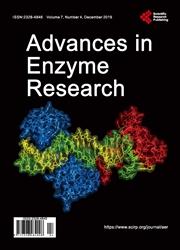Evaluation of Quantitative Phytochemicals, Liver Enzymes and Histological Changes in Isoniazid Induced Hepatotoxicity in Adult Male Wistar Rats Treated with Aqueous Extracts of Brysocarpus coccineus
引用次数: 0
Abstract
Isoniazid induced hepatotoxicity is a major concern in patients taking anti tuberculosis treatment and prophylaxis. It can result in elevated serum liver enzymes and hepatic failure. The aim of the study was to evaluate the phytochemicals and ameliorative effects of aqueous extracts of Brysocarpus coccineus on serum liver enzymes in isoniazid (INH) induced hepatotoxicity in adult male Wistar rats. Thirty six (36) adult male Wistar rats were divided into six groups of six rats each and were treated orally for 30 days as follows: Group I: 1 ml/kg of distilled water; group II: Isoniazid (27 mg/kg); group III: Isoniazid (27 mg/kg) + Livolin forte (20 mg/kg); group IV: Isoniazid (27 mg/kg) + B. coccineus (200 mg/kg); group V: Isoniazid (27 mg/kg) + B. coccineus (400 mg/kg); group VI: Isoniazid (27 mg/kg) + B. coccineus (800 mg/kg). At the end of the experiments, the Wistar rats were sacrificed and sera obtained for liver enzymes assay, whereas the liver tissue was also harvested and used for histological studies. Tanins, saponins, alkaloids and flavonoids were quantitatively present at 2.29%, 18.05%, 23.24% and 18.99%, respectively. There was an increase in the serum AST and ALT in the isoniazid treated group, which was reversed by livolin forte and the aqueous extracts at a dose of 200 mg/kg, however the extracts increased the serum levels of AST and ALT at higher doses, which was however not significant (p > 0.05) when compared to the controls. There was evidence of a reduction in hepatocytes damage in the extract treated groups when compared to the Isoniazid untreated group. In conclusion, aqueous extracts of B. coccineus shows hepatoprotective effects at 200 mg/kg in isoniazid hepatotoxicity in adult male Wistar rats.异烟肼致成年雄性Wistar大鼠肝毒性的定量植物化学物质、肝酶和组织学变化
异烟肼引起的肝毒性是接受抗结核治疗和预防的患者主要关注的问题。它会导致血清肝酶升高和肝功能衰竭。本研究的目的是评价异烟肼(INH)诱导成年雄性Wistar大鼠肝毒性的植物化学物质和球藻水提取物对血清肝酶的改善作用。三十六(36)只成年雄性Wistar大鼠被分为六组,每组六只,并按如下方式口服治疗30天:第一组:1ml/kg蒸馏水;Ⅱ组:异烟肼(27mg/kg);III组:异烟肼(27mg/kg)+利沃林(20mg/kg);IV组:异烟肼(27mg/kg)+球虫(200mg/kg);V组:异烟肼(27mg/kg)+球虫(400mg/kg);第六组:异烟肼(27mg/kg)+球虫(800mg/kg)。在实验结束时,处死Wistar大鼠并获得血清用于肝酶测定,同时也收获肝组织并用于组织学研究。含量分别为2.29%、18.05%、23.24%和18.99%。异烟肼治疗组的血清AST和ALT升高,在200mg/kg的剂量下,强利沃林和水提取物逆转了这一现象,但提取物在更高剂量下增加了血清AST和丙氨酸氨基转移酶的水平,但与对照组相比,这并不显著(p>0.05)。有证据表明,与异烟肼未治疗组相比,提取物治疗组的肝细胞损伤减少。总之,在成年雄性Wistar大鼠的异烟肼肝毒性中,球虫水提取物在200mg/kg时表现出保肝作用。
本文章由计算机程序翻译,如有差异,请以英文原文为准。
求助全文
约1分钟内获得全文
求助全文

 求助内容:
求助内容: 应助结果提醒方式:
应助结果提醒方式:


